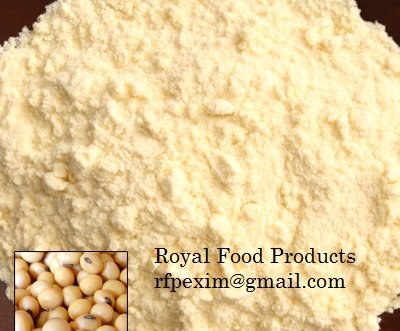
Current marketing says that soy is rich in protein and other important nutrients and that it makes a valuable contribution to an overall healthy diet. The curious thing is that this marketing comes from both big agribusiness and the health food industry -- strange bedfellows indeed. Nevertheless, there are some studies on the benefits of soy to support their enthusiasm. Soy is high in phytoestrogens -- particularly isoflavones -- which means that it is likely to have a positive hormonal impact on both men and women. And in fact, some studies have shown that consuming soy products can help with menopausal symptoms in women3 and prostate problems in men.4,5 Studies on the benefits of soy in regard to menopausal bone health and the prevention of breast cancer, though, have been more equivocal despite claims to the contrary.
Perhaps unsurprisingly, given that they are (unless adulterated) low in saturated fats and have no cholesterol, the consumption of soy products has been associated with improved cardiovascular health. Specifically, it has been found that diets high in soy products are associated with lower blood pressure,6 reduced triglyceride and cholesterol levels,7 and a reduced incidence of diabetes.All of that said, a 2011 report from the North American Menopause Society was far more equivocal in its support of the benefits of soy. According to the report, "From the hundreds of studies reviewed in this report, there are mixed results of the effects on midlife women. Soy-based isoflavones are modestly effective in relieving menopausal symptoms; supplements providing higher proportions of genistein or increased in S(-)-equol may provide more benefits. Soy food consumption is associated with lower risk of breast and endometrial cancer in observational studies. The efficacy of isoflavones on bone has not been proven, and the clinical picture of whether soy has cardiovascular benefits is still evolving. Preliminary findings on cognitive benefit from isoflavone therapy support a "critical window" hypothesis wherein younger postmenopausal women derive more than older women."9 Specifically, the report found that:
At one time, soy protein was a waste product -- a byproduct from manufacturing soy oil. Then, in typical American industry brilliance (think fluoride), manufacturers found a way to turn a waste product that cost money to dispose of into a major money maker: they used it as cattle feed.10 And in fact, the use of soy protein as cattle feed is one of the primary driving forces in the growth of the meat and dairy industry. (It's also a major component of feed used to raise chickens, turkeys, pigs, cows, and even fish raised on fish farms.) The next step, obviously, was to make it palatable for human beings. In its raw form, after oil extraction, it looks and smells quite nasty. But by adding flavorings, preservatives, sweeteners, emulsifiers and synthetic nutrients, what was formerly cattle feed is turned into a pretty palatable meat substitute for humans.
Incidentally, soy milk used as a low-fat high-protein dairy substitute has seen the biggest gains in market share. Sales have increased exponentially from $2 million a year in 1980 to approximately $1billion a year today -- and that's just in the US.11
If you consider everywhere it's used (not just by bodybuilders, where whey is king), soy just might be the number one protein supplement on the planet. In fact, according to Margaret E. Cook-Newell, one of the lead researchers in a 1995 review of soy protein published in the New England Journal of Medicine,12 "There are 12,000 soy products on the market, and many more will be coming soon." Seven years later, that number is likely now much, much higher. The bottom line is that, worldwide, the soy protein market currently tops $5.1 billion a year and is projected to just keep on growing as the need for inexpensive protein supplementation only increases as it keeps pace with the world's expanding population and as incomes in third world countries continue to increase.
